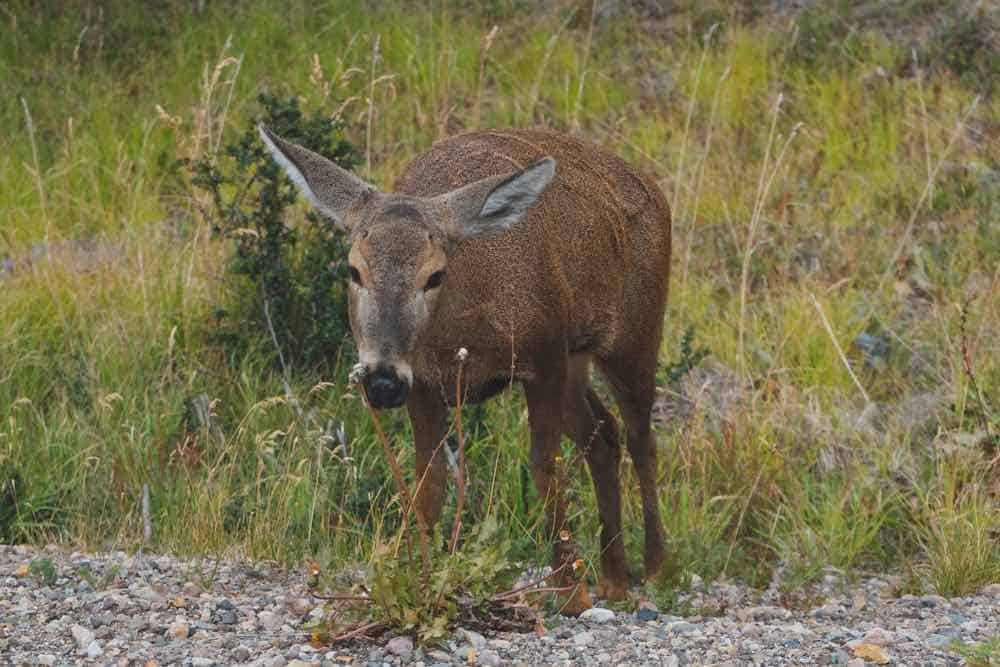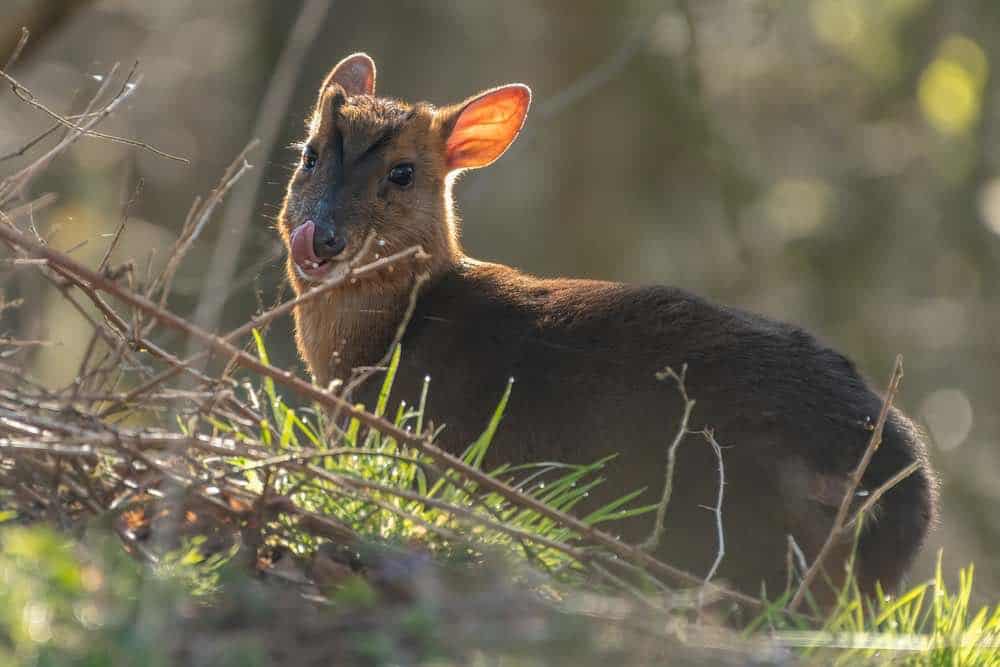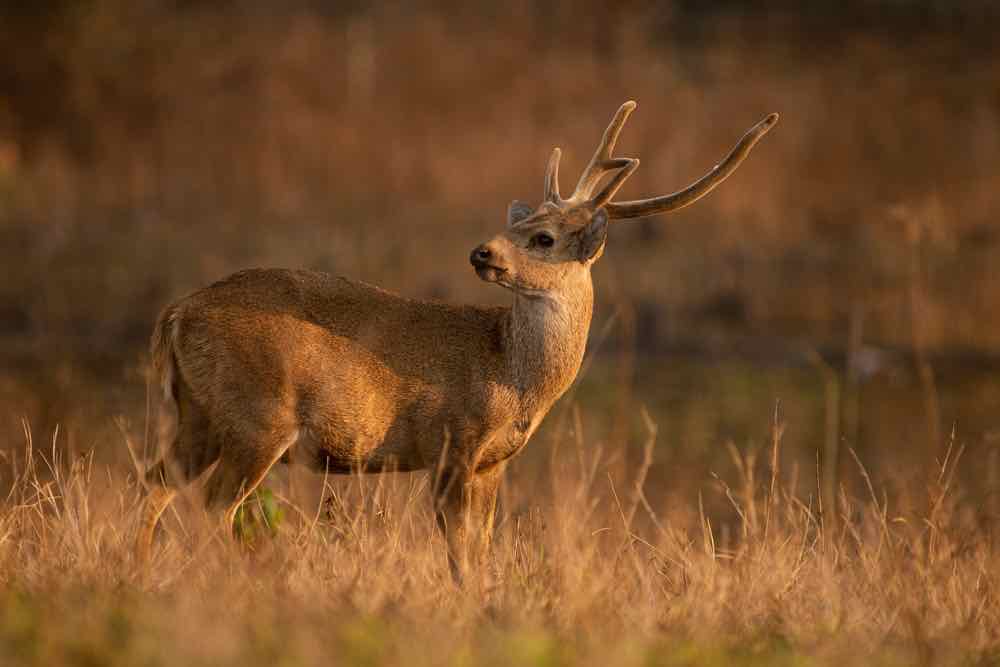Did you know that the Marsh Deer is the largest species of deer in South America? If you’ve ever wanted to learn more about the unique animal, then check out this guide educating you on the animal. Below, you’ll learn about the physical attributes, natural habitat, and endangerment status of the rare species.
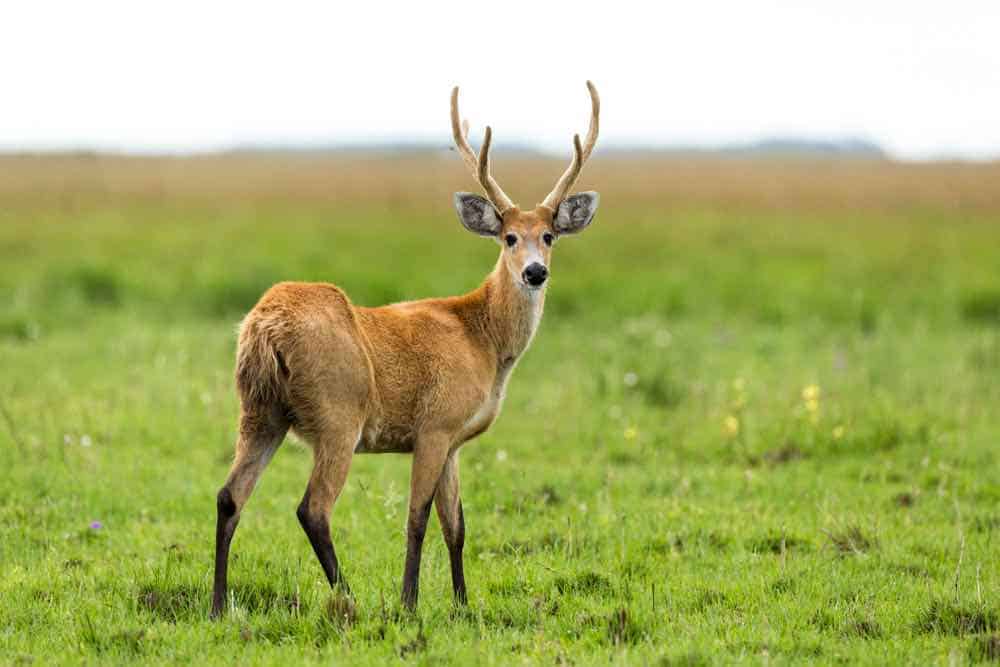
What Do Marsh Deer Look Like?
Before we get into all the details on the rare animal, let’s first examine the unique species’ physical traits that set it apart from other deer.
Great Heights of the Marsh Deer
If you see the deer species up close and personal, you might first be taken aback by the insurmountable height. While they can only grow up to 4ft in height, the extensive multi-lined antlers trick you into thinking they’re even taller. You might be surprised to learn that the Marsh Deer antlers can grow to be 23 inches long, adding an extra 2 feet to their height.
You’ll often see mature males with antlers that have 10 tines, but sometimes you might see that number go up to 12 and weigh over 5 lbs. Since the rare animal is a tropical species, there is no set growth time for the antlers. Each deer keeps their antlers for 1-2 years before they lose them and grow a new pair.
A Coat of Many Colors

You’ll notice that the Marsh Deer carries a medley of colors on its coat. You might catch the distinct reddish-brown pelage, which turns a darker brown in the winter. This contrasts against the large ears which are lined with striking white fur. The lips, muzzle, and legs have dark brown fur that helps the deer blend in with the scenery.
Unique Hooves
One of the most interesting parts of this deer species is the large hooves, which are very distinct from other species of deer. Each hoove spreads to 4 inches in length and covers a lot of ground.
The claws that sprout from the hoove can grow up to 3 inches, which helps achieve an even greater surface area. Combined with the elastic interdigital webbing between each digit, the Marsh Deer has a superior advantage when trekking through swampy, wet terrain. No swamp or muddy area is a match for the highly evolved species.
Origins of the Marsh Deer
The Marsh Deer originated in the tropical rainforests of South America. Prior to climate change, you could find this unique species roaming a vast plot of land that includes the East Andes, the Amazon Rainforest, and the Argentina Pampas.
Where Can You Find Marsh Deer?
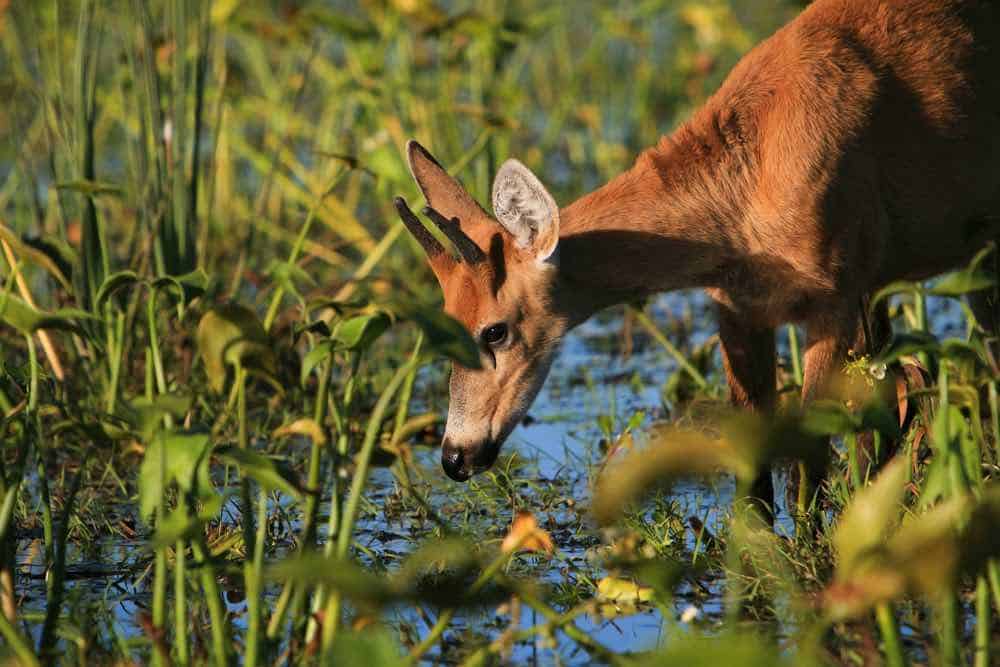
These days, you’ll find that the Marsh Deer population is largely reduced to isolated populations in marsh and lagoon zones. Like its namesake, the deer prefer swampy, marshy areas with lots of standing water and lush vegetation. The deer species are excellent waders and favor locations with at least 2 feet of water.
Sometimes, the deer species will flock to flooded savannas whenever the wet season rolls around, which makes them more vulnerable to hunting. To combat the increased susceptibility, the rare species tend to seek out areas of dense reeds for appropriate coverage from predators.
Researchers have found that this type of deer has started making homes in regions of mountainous terrain, but this could be a byproduct of avoiding human hunters.
What Does the Marsh Deer Eat?
Like many species of deer, Marsh Deer are herbivores. They consume a mixture of aquatic vegetation including water lilies, shrubs, and other foliage. Their diet also changes between the dry season and the flood season. One study found that this deer species eats 50% grass and 30% legumes as a part of their diet.
Notable Marsh Deer Behavior
Now that we’ve gone over the appearance, habitat, and diet of the Marsh Deer, let’s take a dive into some of the unique behaviours of the species.
A Solitary Creature of the Night
If you were to observe the rare deer in its natural habitat, you would notice that the species is most active in the early morning hours and at night. This becomes even more apparent in more industrial areas; any Marsh Deer that reside near towns and cities are almost always nocturnal.
Many of these animals are solitary in nature and travel with very few accompaniments. During the wet season, these deer tend to scatter and displace from one another, and vice versa during the dry season.
A Camera-Shy Species
If you’ve dreamed about catching a glimpse of the Marsh Deer close-up, prepare to wait for a while because this is one shy deer species. They spend most of their time taking cover behind reeds to camouflage themselves from predators.
Marsh Deer Reproduction
While little is known about the mating system in this type of deer, you can still piece together some vital information. In the Southern regions where they reside, you’ll discover that the mating season takes place between October and November, whereas in the Northern tropical regions, it can occur all year round.
The gestation period ranges between 240 and 260 days long, and usually, only a single deer is born. At birth, you might observe that the young fawns lack spots and marks that are a staple of the species. That’s because the monotone colored-coat helps camouflage the young fawn from natural predators.
Young deer feed off their mother for about 5-6 months before getting weaned off and will stick around for another year until they go off on their own.
You might be surprised to learn the reason behind this; the female deer will mate again soon after giving birth, so they remain in a continual pregnant state. The fawn only leaves once a new one is born, so there’s this constant cycle of raising young deer for the mother.
Marsh Deer Predators
Historically, pumas and jaguars were the natural hunters of this species of deer but these two predators have disappeared from the Marsh Deer’s habitat.
These days, the biggest predator of this deer species are humans, which have impacted the species’ population in negative ways.
Are Marsh Deer Endangered?
Marsh Deer are a valuable game animal; the impressive antlers and colossal hooves make them a popular hunting trophy. Unfortunately, that also means that they are a targeted species with a dwindling population.
Aside from the threat of hunting, this animal is also susceptible to the destruction of their habitat for agriculture, tree plantations, and dams.
Because of the uncontrolled hunting and compromised habitat, this species of deer is classified as Vulnerable on the IUCN Red List.
The current estimation of the population is as follows:
- Brazil: 41,000
- Argentina: 2,000
- Bolivia: 700
However, it’s not all doom and gloom. You’ll be relieved to know that there are water protection laws, species management programs, and awareness curriculums in place to help combat vulnerable species.
Conclusion
Marsh Deer are a vulnerable species with a visually-striking appearance and introverted lifestyle. If you’re lucky enough to see this beautiful deer up close, it would be a rare surprise you certainly won’t forget.
If you want to learn more about other types of deer, check our Deer Resources page.

